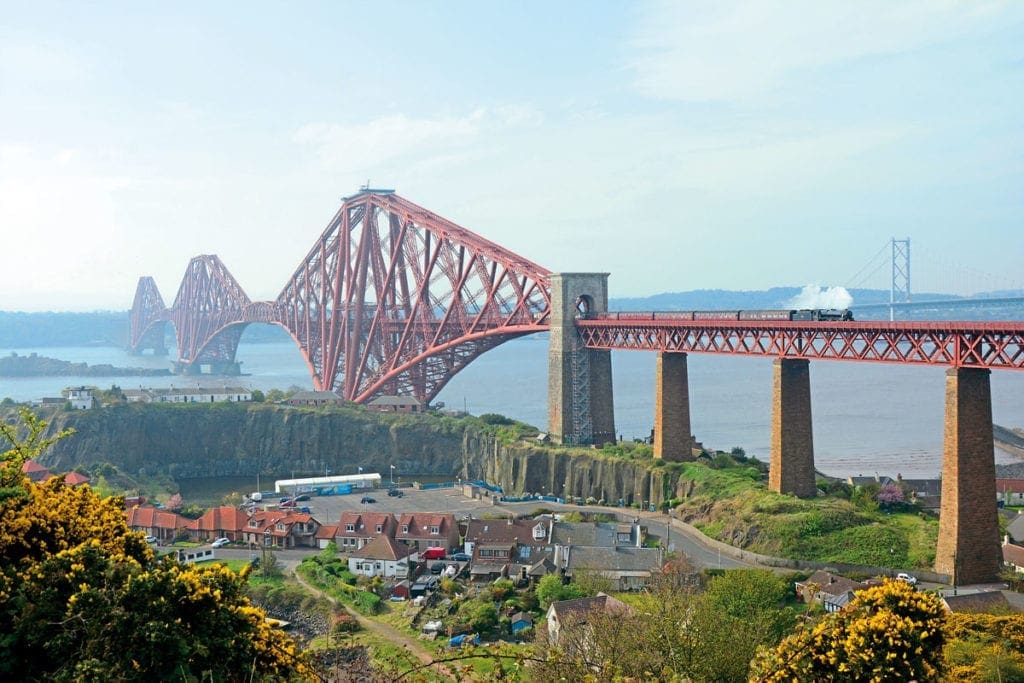
Admired around the world for its pioneering design and historic methods of construction, the Forth Bridge is one of the most recognisable features of Britain’s railway.
Opened in 1890 and still holding the record as the longest cantilever bridge in the world, the Forth Bridge was the first major structure in Britain to be made of steel and its construction resulted in a continuous East Coast railway route from London to Aberdeen.
The famous Forth Bridge this week celebrates the 130th anniversary of its opening, a glorious feat and a testament to the innovation of its engineering. Here are a few facts you perhaps didn’t know about the famous Scottish landmark.
From the history of steam through to 21st century rail transport news, we have titles that cater for all rail enthusiasts. Covering diesels, modelling, steam and modern railways, check out our range of magazines and fantastic subscription offers.
1. Original bridge over Firth of Forth collapsed in storm
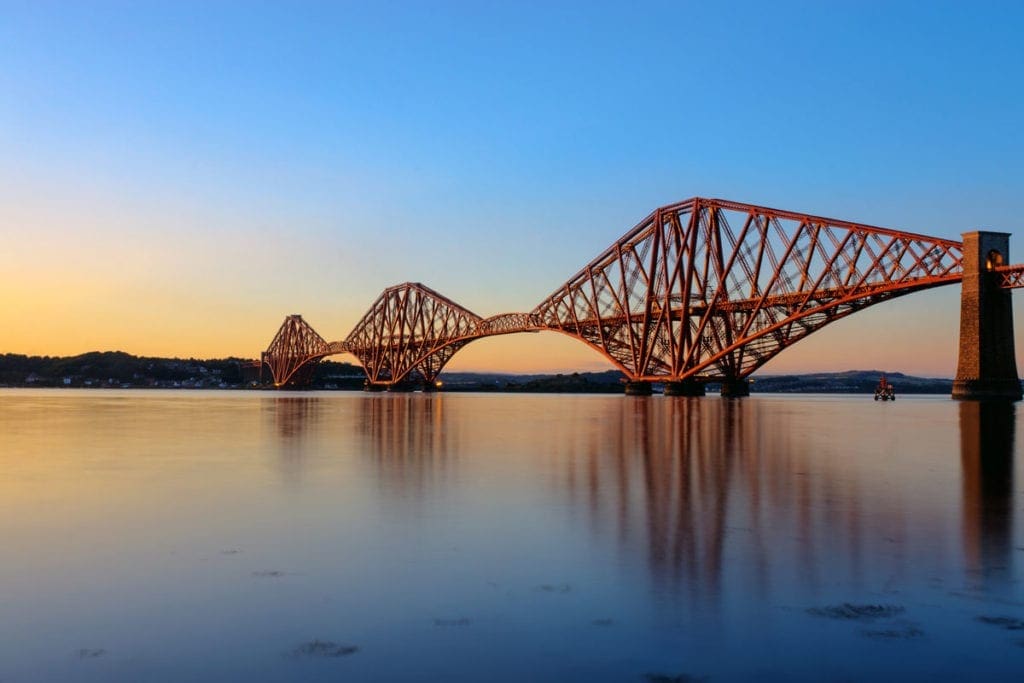
In August 1873, the North British Railway obtained authority to build a railway bridge across the Firth of Forth and construction of a suspension bridge, designed by Thomas Bouch, began in 1878.
However when Bouch’s original Tay Bridge collapsed during a storm in December 1879, work on his bridge across the Forth stopped immediately pending a full inquiry. The tragedy came three days after Christmas, with the loss of an estimated 75 train passengers.
Bouch’s suspension bridge plans were abandoned in 1881 and designs for a new bridge were invited by the newly formed Forth Bridge Railway Company which had been established jointly by those railway companies who had most to gain from a railway crossing the Forth: the North British Railway, the Midland Railway and the North Eastern and Great Northern railways.
2. ‘Longest in the world’
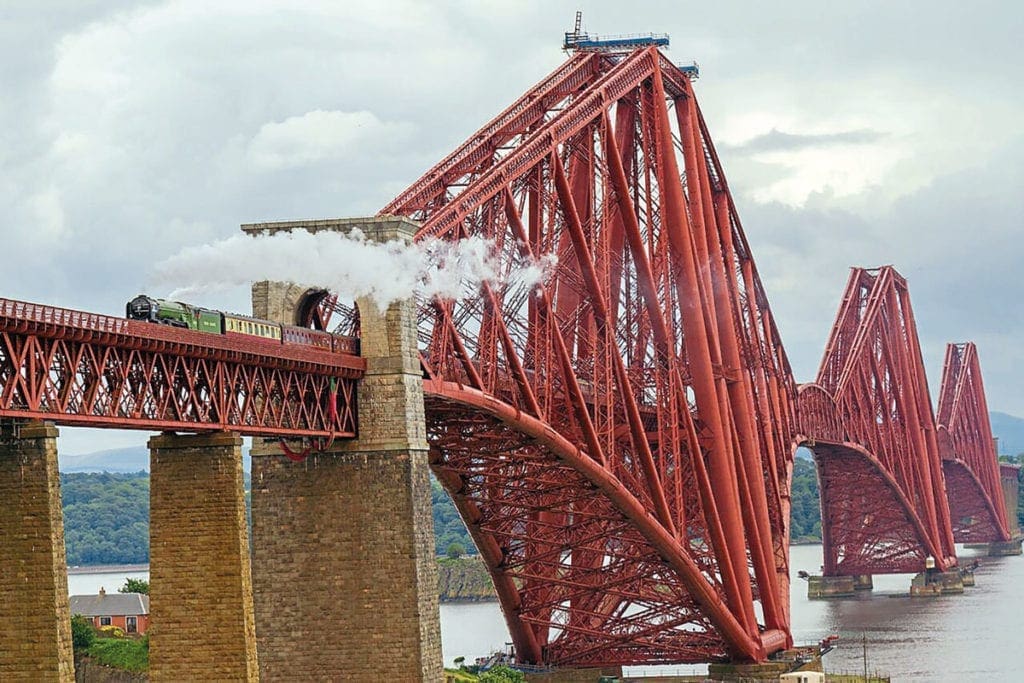
The Forth Bridge has three double cantilevers, with two 1700ft suspended spans between them which, at the time, was the longest bridge spans in the world.
The rail level is 150ft above water, with each of the towers having four steel tubes 12ft in diameter and reach to a height of 361ft above high water. Their foundations extend 89ft below this into the river bed, making the total height from foundations to the top of the towers 137 metres.
3. King Edward VII formally opened the bridge in 1890
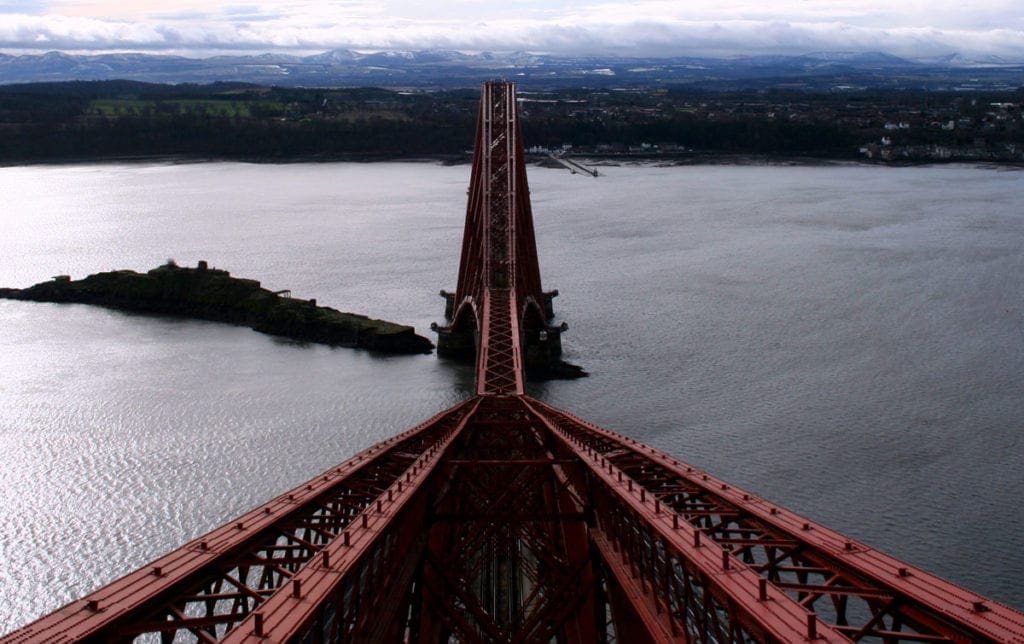
The construction of the bridge cost around £3 million, with a workforce of nearly 5,000 men employed at the height of construction. Shortly after all testing and inspections of the bridge were sorted, in 1890 the Prince of Wales (later King Edward VII) drove home a final gold-plated rivet as he opened the bridge to the public.
4. ‘Painting Forth Bridge is never-ending task’
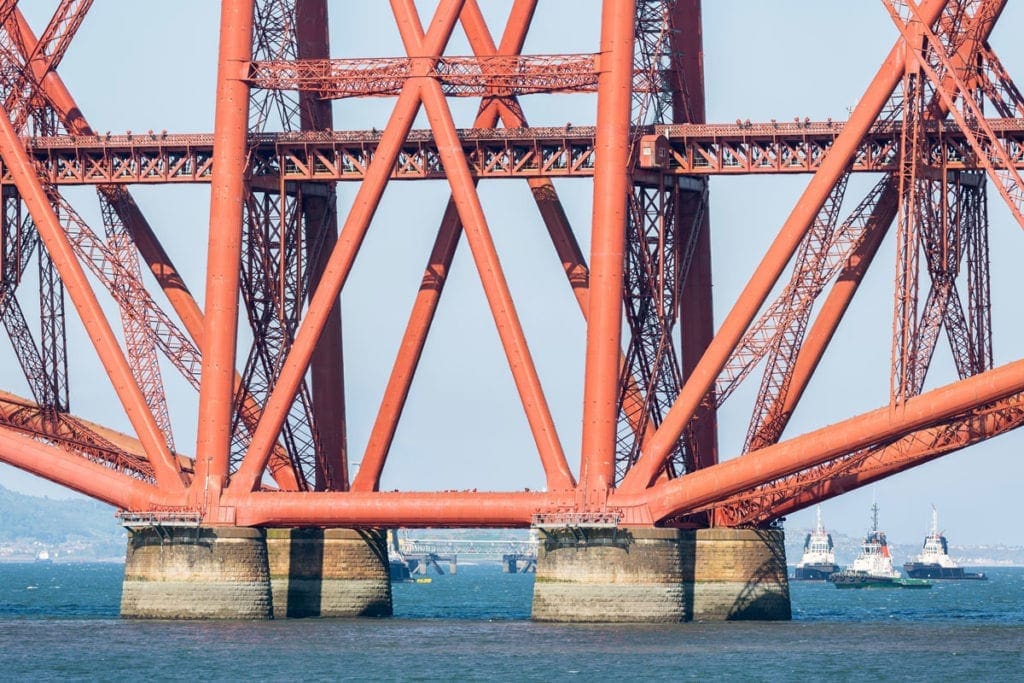
False.
In 2001 a major refurbishment project on the Forth Bridge was announced. Over the next decade, sections of the bridge were covered with significant scaffold access systems with specially prepared screening to prevent debris from the sandblasting and paint contaminating the environment.
After removing the old paint back to the metal, any steelwork that required maintenance was repaired before the new paint was applied.
After thorough cleaning of the steel structure, paint was then applied in three protective layers, both by airless spray and by hand in areas particularly difficult to access, over an area of 230,000 square metres.
This now means that the bridge will not require a full paint for at least 20 years, finally putting an end to the myth that ‘painting the Forth Bridge’ is a never-ending task.
5. Inscribed as a UNESCO World Heritage Site

The Forth Bridge was inscribed as a World Heritage Site by United Nations body UNESCO in July 2015. It became Scotland’s sixth World Heritage Site and now enjoys the same status as the Taj Mahal and the Great Wall of China.


